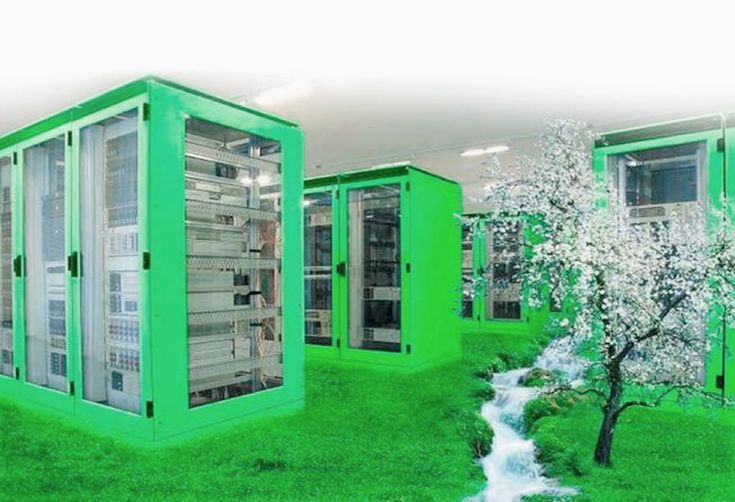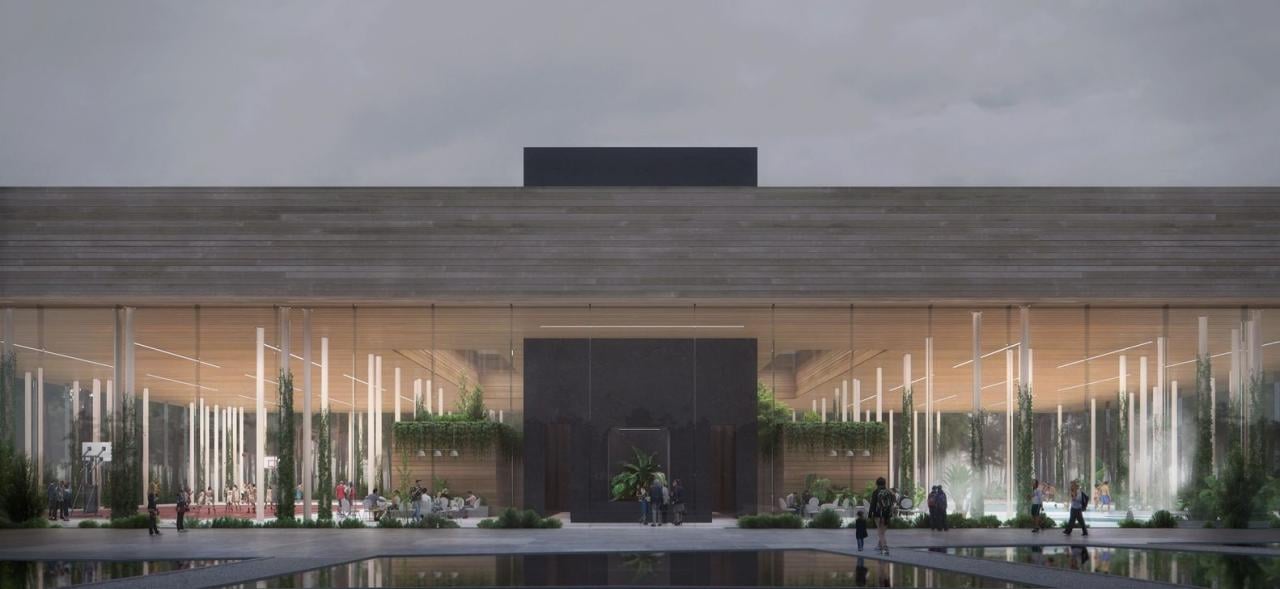In today’s rapidly evolving digital landscape, data centers are the critical backbone supporting the massive influx of information across the globe. With the exponential growth of cloud computing, big data analytics, and the Internet of Things (IoT), the demand for robust data storage and processing capabilities has never been higher. However, this surge in data utilization has also brought with it increased energy consumption and environmental concerns. As a result, the industry is witnessing a paradigm shift toward sustainability—ushering in a new era of green, energy-efficient data centers that not only support global connectivity but also contribute to environmental preservation.
This article explores the revolutionary role of sustainable data centers in transforming global connectivity. It delves into how these facilities operate, the advanced technologies they deploy, their environmental and economic benefits, and the challenges they face. By understanding the transition to green data centers, businesses and policymakers alike can appreciate how sustainability is becoming integral to technological progress and global communication networks.
The Evolution of Data Centers
Data centers have come a long way since their inception. Initially built as large, centralized repositories for computing and data storage, traditional data centers were notorious for their enormous power consumption and cooling requirements. As digitalization accelerated, these facilities expanded to meet the demands of an increasingly connected world, leading to a substantial rise in energy usage and a corresponding environmental footprint.
Over time, the focus has shifted from merely expanding capacity to innovating methods that reduce operational costs and mitigate environmental impacts. Sustainable data centers represent the culmination of this evolution, as they integrate cutting-edge technologies and renewable energy sources to create eco-friendly infrastructures that drive global connectivity.
Understanding Sustainable Data Centers
Sustainable data centers are designed to optimize energy efficiency and minimize environmental impacts. They employ innovative practices that reduce the carbon footprint of data storage and processing. This shift is not just about reducing electricity bills; it is a strategic move toward a greener future. Below are the key elements that define sustainable data centers:
A. Energy Efficiency
One of the primary goals of sustainable data centers is to reduce energy consumption. This is achieved through:
A. Advanced Cooling Techniques: Utilizing innovative cooling methods such as liquid cooling, free cooling, or geothermal cooling to reduce the energy required to keep servers at optimal temperatures.
B. High-Efficiency Hardware: Deploying energy-efficient servers, storage devices, and network equipment that consume less power without compromising performance.
C. Power Management Systems: Implementing sophisticated power management and monitoring systems to track energy usage in real time and optimize power distribution.
B. Renewable Energy Integration
The reliance on fossil fuels is significantly minimized by integrating renewable energy sources. Sustainable data centers frequently utilize:
A. Solar Power: Installing photovoltaic panels on rooftops or in adjacent fields to harness solar energy.
B. Wind Energy: Setting up wind turbines either on-site or through local partnerships to generate clean power.
C. Hydropower and Geothermal Energy: In regions where it is feasible, these natural energy sources are harnessed to support data center operations.
C. Waste Heat Recovery
Innovative data centers are not simply energy consumers; they are becoming energy producers by reusing waste heat. Techniques include:
A. District Heating Systems: Redirecting excess heat to nearby residential or commercial buildings.
B. Industrial Processes: Supplying waste heat to support local industrial activities, thereby creating a symbiotic relationship between data centers and neighboring enterprises.
D. Sustainable Building Materials and Design
The physical design of a data center can greatly impact its sustainability. Modern facilities are constructed using:
A. Eco-Friendly Materials: Using recycled or sustainably sourced building materials to minimize the environmental footprint of construction.
B. Optimized Layouts: Designing data centers with efficient airflow, natural lighting, and optimized spatial arrangements to reduce energy consumption.
The Impact on Global Connectivity
Sustainable data centers do more than reduce energy usage—they revolutionize global connectivity by offering reliable, high-speed, and eco-friendly computing solutions that power the digital economy. Their impact can be observed in several critical areas:
A. Enhanced Network Reliability
Green data centers are built to deliver high availability and reliability. By integrating advanced power management and cooling systems, these facilities can maintain continuous operation even under heavy load conditions. This reliability is crucial for:
A. Cloud Service Providers: Ensuring uninterrupted access to cloud applications and data.
B. Telecommunications: Supporting robust communication networks that facilitate global data exchange.
C. Financial Services: Enabling secure and efficient transaction processing around the clock.
B. Increased Data Transmission Speeds
The design innovations in sustainable data centers also lead to improved data processing speeds and reduced latency. This enhancement is essential for:
A. Real-Time Applications: Supporting streaming, online gaming, and virtual reality experiences that require minimal delay.
B. Big Data Analytics: Enabling faster data processing for analytics, machine learning, and artificial intelligence applications.
C. Scalability for Future Demands
As digital data continues to proliferate, the need for scalable infrastructure grows. Sustainable data centers are engineered to accommodate future expansion without compromising on efficiency or environmental standards. Their scalable architecture allows:
A. Modular Growth: Adding capacity incrementally as demand increases.
B. Flexibility in Operations: Integrating new technologies and upgrading systems with minimal disruption to ongoing operations.
Environmental Benefits
One of the most significant advantages of sustainable data centers is their positive impact on the environment. By drastically reducing energy consumption and carbon emissions, these facilities contribute to a greener planet and help combat climate change.
A. Lower Carbon Footprint
Data centers are among the largest consumers of electricity in the world, and traditional centers often rely heavily on fossil fuels. Sustainable data centers, however, integrate renewable energy sources and energy-efficient practices to significantly lower their carbon footprint. This reduction is achieved through:
A. Efficient Energy Use: Lowering the overall energy required for cooling and power distribution.
B. Renewable Energy Adoption: Increasing the share of clean energy in the overall energy mix.
C. Waste Heat Utilization: Reducing waste by repurposing heat generated during operations.
B. Reduced Resource Consumption
The implementation of energy-efficient technologies in sustainable data centers leads to a marked decrease in the consumption of natural resources. This not only conserves valuable resources but also reduces the environmental impact associated with resource extraction and processing.
C. Promoting Green Innovation
The drive toward sustainability encourages ongoing research and development in green technologies. As sustainable data centers become more common, they pave the way for further innovations in energy management, renewable energy integration, and environmentally friendly design practices.
Technological Innovations Driving Sustainability
The transformation of traditional data centers into sustainable powerhouses is underpinned by a range of technological advancements. These innovations are setting new standards for energy efficiency and operational excellence.
A. Intelligent Cooling Systems
Cooling is one of the most energy-intensive aspects of data center operation. Intelligent cooling systems now employ sensor-driven technologies to monitor and adjust cooling parameters in real time. Features include:
A. Adaptive Cooling: Systems that automatically adjust to the varying heat outputs of servers.
B. Predictive Maintenance: Using machine learning to predict equipment failures and optimize cooling efficiency.
C. Fluid Cooling Solutions: Advanced techniques like liquid or immersion cooling that outperform traditional air-based systems.
B. Advanced Monitoring and Automation
State-of-the-art monitoring tools enable data center operators to keep a close eye on energy usage, temperature, and performance metrics. These tools use automation and AI-driven analytics to ensure optimal performance by:
A. Real-Time Data Analysis: Continuously tracking operational parameters and flagging anomalies.
B. Automated Adjustments: Making instantaneous adjustments to energy consumption and cooling systems based on current needs.
C. Remote Management: Allowing operators to monitor and control data center operations from anywhere in the world.
C. Modular Data Center Designs
Modularity is a key concept in sustainable data center design. Modular data centers are built in scalable, pre-fabricated units that can be rapidly deployed and integrated into existing infrastructure. Their benefits include:
A. Cost Efficiency: Reduced construction and operational costs due to standardized components.
B. Energy Optimization: Each module can be individually optimized for energy efficiency, resulting in overall lower consumption.
C. Scalability: Easy expansion as demand grows, without the need for extensive retrofitting.
D. Integration of Renewable Energy Sources
To meet the high energy demands sustainably, data centers are increasingly integrating renewable energy systems into their operations. This includes:
A. On-Site Solar Arrays: Installation of solar panels to harness local solar energy.
B. Wind Energy Partnerships: Collaborating with wind farms or installing on-site wind turbines.
C. Energy Storage Solutions: Utilizing advanced battery systems to store surplus renewable energy for peak usage times.
Economic and Social Impacts
The shift toward sustainable data centers extends beyond environmental benefits; it also has significant economic and social implications. These impacts are reshaping industries and communities worldwide.
A. Lower Operational Costs
Sustainable data centers often result in lower long-term operational costs. By reducing energy consumption and integrating renewable sources, companies can save substantially on electricity bills and maintenance expenses. This cost efficiency allows organizations to:
A. Reinvest Savings: Allocate funds to research, development, or other business areas.
B. Offer Competitive Pricing: Pass on savings to customers, enhancing market competitiveness.
C. Increase Profit Margins: Achieve higher profitability through reduced operational overheads.
B. Job Creation and Skill Development
The green revolution in data centers is creating new job opportunities and driving skill development in emerging technologies. As the industry evolves, there is a growing demand for expertise in:
A. Renewable Energy Systems: Engineers and technicians skilled in solar, wind, and geothermal technologies.
B. Data Center Management: Professionals adept at managing energy-efficient and sustainable infrastructures.
C. Green Technology Research: Scientists and researchers dedicated to developing new eco-friendly solutions.
C. Community and Environmental Health
Sustainable data centers contribute positively to community well-being. By reducing the reliance on fossil fuels and minimizing emissions, these facilities help improve air quality and reduce environmental degradation. Additionally, the innovative use of waste heat recovery can benefit local communities by providing an alternative energy source for residential and commercial heating.
Case Studies: Pioneers in Sustainable Data Centers
Real-world examples demonstrate the transformative power of sustainable data centers. Several organizations have already reaped significant benefits by adopting green technologies.
A. Global Cloud Service Provider
A leading cloud services company has transitioned many of its data centers to operate on renewable energy. By integrating advanced cooling systems and real-time energy monitoring, the provider achieved a substantial reduction in energy consumption and carbon emissions. Their success has set a benchmark for the industry, showcasing that sustainability and high performance can coexist.
B. Tech Giant’s Green Initiative
A renowned technology conglomerate has invested heavily in modular data centers designed for energy efficiency. These facilities, equipped with cutting-edge renewable energy integration, have not only lowered operational costs but also improved system reliability. The company’s commitment to sustainability has been recognized globally, influencing industry standards and encouraging competitors to adopt similar practices.
C. Regional Data Hub
A regional data center has partnered with local renewable energy providers to create a microgrid system that powers its operations entirely with clean energy. This innovative approach not only ensures uninterrupted service but also contributes to the local economy by creating jobs and promoting sustainable development practices.
Challenges and Solutions
While the benefits of sustainable data centers are significant, the transition is not without its challenges. Addressing these hurdles is essential for the continued growth and adoption of green data centers.
A. High Initial Investment
One of the primary obstacles is the high upfront cost associated with building and retrofitting data centers with sustainable technologies. However, the long-term savings in energy and operational costs often justify the initial expenditure. Solutions include:
A. Government Incentives: Leveraging tax credits, grants, and subsidies aimed at promoting green technology.
B. Public-Private Partnerships: Collaborating with public institutions to share costs and reduce financial risks.
C. Long-Term ROI Analysis: Demonstrating cost-effectiveness through comprehensive return-on-investment studies.
B. Technological Integration
Integrating new sustainable technologies with existing legacy systems can be complex. Successful integration requires:
A. Comprehensive Planning: Developing a phased approach to upgrade systems without disrupting operations.
B. Expert Consultation: Engaging specialists in both traditional and renewable technologies to ensure compatibility.
C. Continuous Monitoring: Implementing robust monitoring systems to track performance and make necessary adjustments.
C. Regulatory and Compliance Issues
Navigating the regulatory landscape is crucial for sustainable data centers. Companies must ensure they meet environmental standards and industry regulations by:
A. Staying Informed: Keeping abreast of local and international environmental policies.
B. Regular Audits: Conducting frequent environmental and operational audits.
C. Adopting Best Practices: Aligning operations with global sustainability standards and certifications.
Future Trends and Innovations
The future of sustainable data centers looks promising as the industry continues to innovate and adapt to new challenges. Emerging trends include:
A. Quantum Computing Integration
Quantum computing promises to revolutionize data processing, and its integration with sustainable data centers could further enhance energy efficiency and computational speed.
B. Enhanced AI-Driven Management
Artificial intelligence will play an increasingly vital role in managing data center operations, from optimizing energy usage to predicting maintenance needs. AI systems will continuously learn and adapt, ensuring that sustainable practices are maintained at peak efficiency.
C. Expansion of Renewable Energy Sources
The drive toward renewable energy is set to accelerate. As technology advances, new forms of renewable power and energy storage solutions will become available, further reducing reliance on fossil fuels.
D. Increased Global Collaboration
The challenges of climate change and the digital revolution require global cooperation. Future developments in sustainable data centers will likely see increased partnerships between governments, private companies, and international organizations to foster innovation and spread best practices worldwide.
Economic Implications and Market Growth
The shift towards sustainable data centers has significant economic implications. As more businesses and governments commit to reducing their carbon footprints, the demand for green data center solutions is poised to skyrocket.
A. Market Expansion
The market for sustainable data centers is expanding rapidly as companies seek to align their operations with global sustainability trends. This growth is driven by:
A. Corporate Sustainability Goals: Enterprises striving to meet environmental targets and improve their public image.
B. Investor Interest: Increased investment in green technology and sustainable infrastructure projects.
C. Consumer Demand: Growing consumer awareness and preference for environmentally responsible companies.
B. Job Creation and Economic Development
As sustainable data centers become more prevalent, they will create numerous job opportunities in fields such as:
A. Engineering and Construction: Building and retrofitting facilities with eco-friendly materials and technologies.
B. Renewable Energy: Installing and maintaining solar panels, wind turbines, and other renewable systems.
C. IT and Data Management: Managing advanced systems that optimize energy usage and system performance.
C. Global Competitiveness
Countries that invest in sustainable data center infrastructure will position themselves as leaders in technology and environmental stewardship. This investment not only drives domestic economic growth but also attracts international businesses looking for reliable and eco-friendly data management solutions.
Social and Environmental Responsibility
Sustainable data centers embody the intersection of technological advancement and social responsibility. As global connectivity increases, these centers play a pivotal role in ensuring that growth does not come at the expense of our planet.
A. Corporate Social Responsibility (CSR)
Organizations that adopt sustainable practices in their data centers are better positioned to meet their CSR goals. This commitment:
A. Builds Trust: Enhances brand reputation and builds trust with consumers and stakeholders.
B. Reduces Environmental Impact: Contributes to lowering overall carbon emissions and protecting natural resources.
C. Encourages Industry Change: Sets a precedent for other companies to follow suit in adopting green practices.
B. Community Engagement
Sustainable data centers can also foster community engagement through:
A. Local Partnerships: Collaborating with local governments and organizations to promote renewable energy initiatives.
B. Educational Programs: Offering training and educational resources to develop a skilled workforce in sustainable technologies.
C. Public Awareness Campaigns: Raising awareness about the importance of environmental responsibility in the digital age.
Conclusion
Sustainable data centers are at the forefront of a global transformation—redefining how data is managed, stored, and transmitted across the world. By integrating advanced energy-efficient technologies, renewable energy sources, and innovative design principles, these centers are not only optimizing operational efficiency but also paving the way for a greener, more connected future.
The shift toward sustainability in data center operations is driven by a convergence of environmental necessity and technological innovation. As companies and governments recognize the long-term benefits—ranging from reduced operational costs to enhanced corporate reputation—the momentum behind sustainable practices continues to grow. In this new era, data centers are evolving from power-hungry facilities into dynamic, eco-friendly hubs that underpin global connectivity and digital transformation.
Looking ahead, the future of sustainable data centers is bright. With ongoing advancements in AI, renewable energy integration, and modular design, these facilities are poised to meet the ever-increasing demands of the digital age while safeguarding the environment. As we continue to harness the power of technology, the evolution of sustainable data centers stands as a testament to our collective ability to innovate responsibly and build a more sustainable future.














